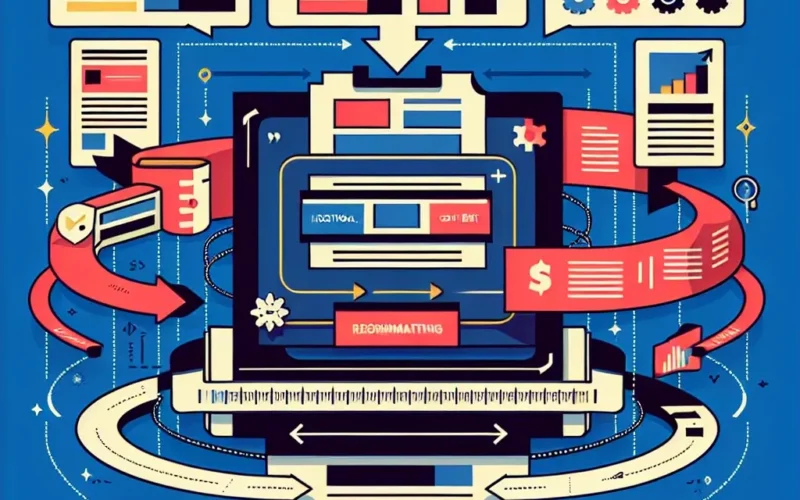Understanding the Shift from Horizontal to Vertical Content
The digital landscape has undergone a dramatic transformation in recent years, with vertical content becoming the dominant format across major social media platforms. From Instagram Stories and TikTok videos to YouTube Shorts and LinkedIn carousels, vertical orientation has emerged as the preferred viewing experience for mobile users worldwide. This shift represents more than just a design trend—it reflects fundamental changes in how audiences consume content on their smartphones and tablets.
The rise of vertical content stems from the simple fact that most users hold their phones vertically. Studies indicate that 94% of mobile users prefer to keep their devices in portrait mode while browsing social media, making vertical content feel more natural and immersive. This behavioral pattern has forced content creators to rethink their strategies and adapt existing horizontal materials for vertical consumption.
Why Vertical Content Matters in Today’s Digital Ecosystem
Vertical content isn’t just about following trends—it’s about optimizing for engagement and reach. Platforms like Instagram, TikTok, and YouTube actively promote vertical content through their algorithms, giving these formats significantly higher visibility than their horizontal counterparts. When you create vertical versions of your horizontal content, you’re essentially unlocking new distribution channels and expanding your potential audience reach.
From a user experience perspective, vertical content eliminates the need for viewers to rotate their devices or squint at small, letterboxed videos. This seamless viewing experience translates directly into higher engagement rates, longer watch times, and improved audience retention. Content creators who embrace vertical formats often see engagement increases of 30-50% compared to horizontal alternatives.
Platform-Specific Vertical Requirements
Different platforms have varying specifications for vertical content, making it essential to understand these requirements before beginning your transformation process:
- Instagram Stories and Reels: 9:16 aspect ratio (1080×1920 pixels)
- TikTok: 9:16 aspect ratio with full-screen vertical videos
- YouTube Shorts: 9:16 aspect ratio, maximum 60 seconds
- Pinterest: 2:3 aspect ratio for optimal performance
- LinkedIn Stories: 9:16 aspect ratio for mobile optimization
Strategic Approaches to Content Transformation
Converting horizontal content to vertical format requires more than simply cropping or rotating your existing materials. Successful transformation involves strategic planning and creative adaptation to ensure your message remains compelling and visually appealing in the new format.
Content Audit and Selection Process
Begin by conducting a comprehensive audit of your existing horizontal content library. Identify pieces that contain valuable information, strong visual elements, or have performed well historically. Not all horizontal content will translate effectively to vertical format, so prioritize materials that can benefit from the intimate, mobile-first viewing experience that vertical content provides.
Look for content with clear focal points, minimal text overlays, and strong visual hierarchy. Educational content, behind-the-scenes footage, product demonstrations, and testimonials typically perform exceptionally well when adapted to vertical formats. Tutorial content, in particular, sees remarkable success in vertical format due to the step-by-step nature that aligns perfectly with mobile consumption patterns.
Design Principles for Vertical Adaptation
When transforming horizontal content, consider the fundamental differences in composition and visual flow. Vertical content requires a top-to-bottom narrative structure rather than the left-to-right progression typical of horizontal formats. This means reorganizing your visual elements to guide the viewer’s eye downward through your content.
Typography becomes crucial in vertical formats, as text needs to be larger and more legible on smaller screens. Implement bold, sans-serif fonts and ensure adequate contrast between text and background elements. Consider using animated text reveals or kinetic typography to maintain viewer engagement throughout the vertical journey.
Technical Tools and Software Solutions
Modern content creation demands efficient tools that can streamline the vertical transformation process. Several software solutions have emerged specifically to address the growing need for multi-format content creation.
Professional Video Editing Solutions
Adobe Premiere Pro offers robust vertical video editing capabilities with preset sequences for various social media platforms. The software’s responsive design features allow you to automatically reframe horizontal footage for vertical output while maintaining focus on key subjects. Final Cut Pro provides similar functionality with its automatic cropping and smart reframing tools.
For more accessible options, tools like Canva, Loom, and InVideo provide user-friendly interfaces for creating vertical content without extensive technical knowledge. These platforms offer templates specifically designed for vertical formats and include features like automatic subtitle generation and brand consistency tools.
AI-Powered Transformation Tools
Artificial intelligence has revolutionized content transformation with tools that can automatically identify key subjects and reframe horizontal content for vertical viewing. Services like Runway ML and Pictory use machine learning algorithms to intelligently crop and adapt content while preserving the most important visual elements.
These AI solutions can process large volumes of content quickly, making them ideal for organizations with extensive content libraries. However, human oversight remains essential to ensure quality and brand consistency across all transformed materials.
Content Optimization Strategies for Maximum Impact
Creating vertical versions of horizontal content extends beyond technical transformation—it requires strategic optimization to maximize engagement and reach across different platforms.
Narrative Restructuring for Vertical Consumption
Vertical content consumption patterns differ significantly from horizontal viewing experiences. Mobile users typically scroll quickly through feeds, giving you mere seconds to capture attention. This reality necessitates front-loading your most compelling content elements and creating immediate visual impact.
Consider implementing the “hook, story, resolution” structure within the first few seconds of your vertical content. This approach ensures viewers understand the value proposition quickly while encouraging them to continue watching or engaging with your material.
Platform-Specific Optimization Techniques
Each platform rewards different types of vertical content engagement. Instagram favors visually striking content with strong aesthetic appeal, while TikTok prioritizes entertainment value and trend participation. LinkedIn responds well to professional, educational vertical content that provides clear business value.
Tailor your vertical content strategy to align with platform-specific algorithms and user expectations. This might involve adjusting your color palette, pacing, or call-to-action placement depending on where you plan to distribute your transformed content.
Measuring Success and Iterating Your Approach
Successful vertical content transformation requires ongoing measurement and optimization based on performance data. Track key metrics including engagement rates, completion rates, shares, and conversion statistics to understand which transformation techniques resonate most effectively with your audience.
A/B testing different vertical approaches can provide valuable insights into optimal formatting, pacing, and visual hierarchy for your specific audience segments. Use platform analytics tools to identify patterns in viewer behavior and adjust your transformation strategy accordingly.
Long-term Content Strategy Integration
As vertical content becomes increasingly dominant, consider integrating vertical-first thinking into your overall content strategy. This might involve planning horizontal content with vertical adaptation in mind, or even creating vertical-native content from the outset.
The most successful content creators today think multi-format from conception, ensuring their ideas can translate effectively across various aspect ratios and platform requirements. This forward-thinking approach maximizes content ROI while ensuring consistent brand messaging across all distribution channels.
Future Trends and Emerging Opportunities
The vertical content landscape continues evolving rapidly, with new platforms and features emerging regularly. Augmented reality filters, interactive elements, and shoppable vertical content represent growing opportunities for brands willing to experiment with innovative transformation techniques.
As 5G networks become more widespread and mobile processing power increases, we can expect vertical content to become even more sophisticated and immersive. Preparing your content transformation workflows for these technological advances will position your brand advantageously in the competitive digital landscape.
The shift toward vertical content represents a fundamental change in digital communication, not merely a temporary trend. By mastering the art and science of transforming horizontal content into compelling vertical experiences, content creators can unlock new audiences, improve engagement metrics, and future-proof their digital strategies for continued success in an increasingly mobile-first world.





